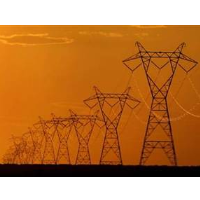U.S. Power Grid Unprepared for Renewable Energy
 (photo: Charlie Riedel, AP)
(photo: Charlie Riedel, AP)
Renewable energy has been touted as the future direction for fulfilling U.S. power needs. But those operating the grids that carry and deliver electricity to homes and businesses have serious concerns over how to incorporate solar, wind and other “green” energy sources in the coming years.
For grids to work effectively and efficiently, power sources need to be constant and reliable. But renewable energy doesn’t always possess these two qualities.
For instance, if the wind stops blowing, turbines can’t function and generate electricity. Same goes for solar panels on cloudy days.
The opposite problem can also occur: days of high winds or bright sunshine can result in solar and wind operators providing too much energy for a grid to handle, forcing operators to dump excess power. Some system operators have said that we are nearing a point where people will have to be paid not to produce power.
There is also a fear that, without a complete overhaul, the grid may soon become vulnerable to collapse, resulting in mass power outages and blackouts.
In California, which has become a leader in the renewable energy industry, grid operators aren’t sure how to utilize renewable energy without stressing out the network, or themselves.
“The grid was not built for renewables,” Trieu Mai, senior analyst at the National Renewable Energy Laboratory, told the Los Angeles Times.
Experts at Caltech said in a recent report (pdf) that incorporating green energy will be “one of the greatest technological challenges industrialized societies have undertaken.”
To eliminate some of the hurdles presented by this new form of energy production, California has ordered large power companies to invest in storage technologies that could bank wind and solar power, so that energy could be distributed more evenly to the grid.
By 2024, utilities will have to store enough green energy to light at least one million homes in the state.
“Energy storage has the potential to be a game changer for our electric grid,” Mark Ferron, a commissioner with the California Public Utilities Commission, told the Times.
It is predicted that, by the year 2030, about $1 trillion will have been spent to bring the nation’s power grid up to date, according to the Caltech report.
-Noel Brinkerhoff
To Learn More:
Power Struggle: Green Energy Versus a Grid That's Not Ready (by Evan Halper, Los Angeles Times)
Bypassing the Power Grid (by Beth Gardiner, New York Times)
Renewable Energy in US: Benefits Outweigh Costs (by Ekaterina Shubnaya, Voice of Russia)
Energy Distributions Can’t Keep up with Wind Energy Production (by Matt Bewig, AllGov)
Why Attempts to Modernize U.S. Power Grid are such a Mess (by Noel Brinkerhoff, AllGov)
- Top Stories
- Unusual News
- Where is the Money Going?
- Controversies
- U.S. and the World
- Appointments and Resignations
- Latest News
- Musk and Trump Fire Members of Congress
- Trump Calls for Violent Street Demonstrations Against Himself
- Trump Changes Name of Republican Party
- The 2024 Election By the Numbers
- Bashar al-Assad—The Fall of a Rabid AntiSemite






Comments